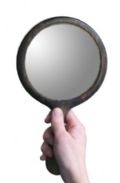No, this is not an article on that ever-popular question about whether sex counts as aerobic exercise.
Body Shape and Bulking Up: The Testosterone FactorFACT: Most women (and many men, for that matter) will not build large muscles in response to weight training—especially while restricting calorie intake for weight loss. The ability to build large muscles depends mostly on levels of the male sex hormone, testosterone. Every person has some amount of both testosterone and estrogen, but the average man has 20 to 30 times more testosterone than the average woman. But even this amount is not enough to allow every man to build large muscles. The bottom line is that relatively few men, and very few women, will end up looking like bodybuilders, even with extensive weight training. The difference in testosterone levels among men and women is also responsible for gender differences in total body fat percentage and fat distribution (where the body stores fat). On average, women have seven to 10 percent more body fat than men, and correspondingly less muscle mass. Minimum ("essential") body fat percentages are about 12 percent for women, and four percent for men. This difference in body composition means that men typically have higher metabolic rates and will usually need more calories (about 300 more per day) than women of comparable weights, because muscle burns more calories than fat. Men tend to be apple shaped, storing more body fat in the upper body (known as "central" fat) and within the body cavity, which is called "visceral" fat. Women tend to be pear shaped, storing more fat in the hips and thighs (known as "peripheral" fat), and beneath the layer of skin, which is called "subcutaneous" fat. This explains Weight Loss: Not All Fat is Created EqualFACT: Although all body fat is made of the same "stuff," where it's stored can make a big difference in both how risky it is to your health, and Therefore, men (and women) who are "apple" shapes will have an easier time losing fat—especially in the beginning. The bad news is that their greater proportion of visceral fat (big, firm, beer belly) puts them at a much higher risk of obesity-related diseases than people who are "pear" shapes and who store more subcutaneous fat (soft love handles, spare tires, or rolls of belly or back fat). This does not mean that it's impossible to lose subcutaneous or peripheral fat. If you maintain a caloric deficit, your body will burn fat from wherever you have it stored. In general, most people lose fat deposits in a "first on, last off" pattern. Those pesky problem spots will most likely be problem spots to the bitter end, unfortunately. And weight loss is not likely to change your basic body shape—just your size. Fitness and PerformanceFACT: Although women naturally carry additional body fat, it does not impair fitness, performance, or health. In fact, women who reduce their body fat below 12 percent may experience loss of menstruation, bone density problems, and an increased risk for breast and endometrial cancers, as well as other problems associated with poor nutrition. Gender differences in muscle size, speed, and strength are mainly the result of testosterone-related differences in the quantity of muscle mass. There’s no evidence of gender differences in the quality of the muscle itself. Women will respond equally well to both strength training and aerobic exercise, improving in strength, endurance, speed and efficiency. The maximum intensity and duration women can achieve during aerobic exercise is typically five to 10 percent less than their male counterparts. This is because women typically have five to 10 percent less hemoglobin (an iron-containing protein in red blood cells that helps deliver oxygen to working muscles). Women who find themselves unable to work out as hard or as long for no apparent reason (or during that time of Body Image & Body SatisfactionRecent national studies involving over 11,000 high school students and 60,000 adults found the following differences in how males and females feel about their bodies:
Speaking on behalf of men everywhere who have been rejected (on aesthetic grounds) from membership to the Federation of Muscle Shirt Wearers, this writer wants to express his appreciation to those women (and men) who remain firm in their convictions that it's not the packaging that's important, but what's on the inside that counts. |







